
Clemens August of Bavaria was an 18th-century member of the Wittelsbach dynasty of Bavaria and Archbishop-Elector of Cologne.

Arnsberg is a town in the Hochsauerland county, in the German state of North Rhine-Westphalia. It is the location of the Regierungsbezirk Arnsberg administration and one of the three local administration offices of the Hochsauerlandkreis district.

The House of Welf is a European dynasty that has included many German and British monarchs from the 11th to 20th century and Emperor Ivan VI of Russia in the 18th century. The originally Franconian family from the Meuse-Moselle area was closely related to the imperial family of the Carolingians.

Ehrengard Melusine von der Schulenburg, suo jureDuchess of Kendal, suo jureDuchess of Munster was a longtime mistress to King George I of Great Britain.
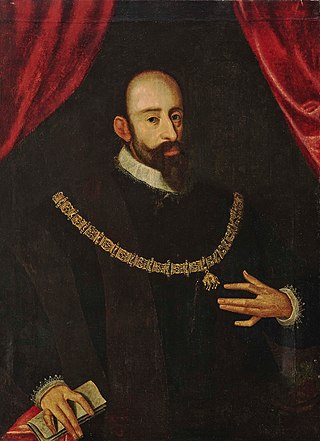
William V, called the Pious, was Duke of Bavaria from 1579 to 1597.
Otto of Nordheim was Duke of Bavaria from 1061 until 1070. He was one of the leaders of the Saxon revolt of 1073–1075 and the Saxon revolt of 1077–1088 against King Henry IV of Germany.
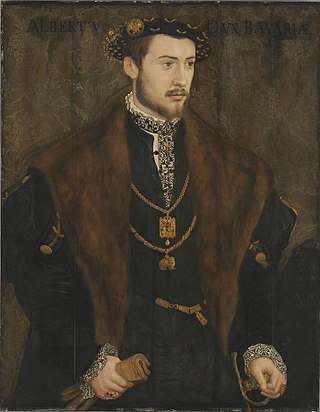
Albert V was Duke of Bavaria from 1550 until his death. He was born in Munich to William IV and Maria Jacobäa of Baden.
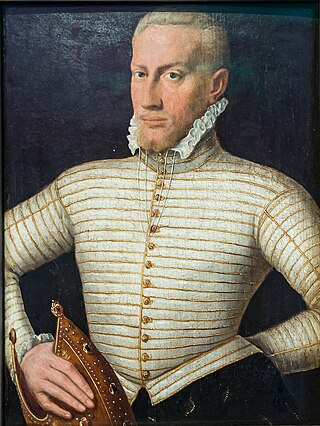
Gebhard Truchsess von Waldburg was the archbishop-elector of Cologne from 1577 to 1588. After pursuing an ecclesiastical career, he won a close election in the cathedral chapter of Cologne over Ernst of Bavaria. After his election, he fell in love with and later married Agnes von Mansfeld-Eisleben, a Protestant canoness at the Abbey of Gerresheim. His conversion to Calvinism and announcement of religious parity in the electorate triggered the Cologne War.

Ferdinand of Bavaria was Prince-elector archbishop of the Archbishopric of Cologne from 1612 to 1650, as successor of Ernest of Bavaria. He was also prince-bishop of Hildesheim, Liège, Münster, and Paderborn.

The Duchy of Westphalia was a historic territory in the Holy Roman Empire, which existed from 1102 to 1803. It was located in the greater region of Westphalia, originally one of the three main regions in the German stem duchy of Saxony and today part of the state of North Rhine-Westphalia. The duchy was held by the archbishop-electors of Cologne until its secularization in 1803.
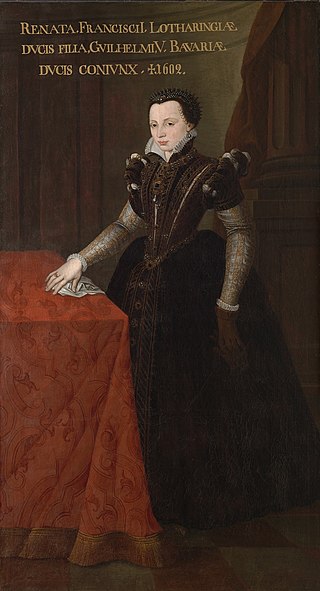
Renata of Lorraine was a French noblewoman of the House of Lorraine who became a Duchess of Bavaria by her marriage to Duke William V.
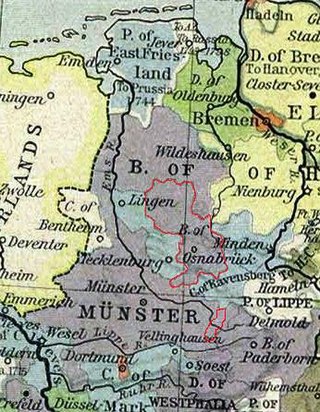
The Prince-Bishopric of Osnabrück was an ecclesiastical principality of the Holy Roman Empire from 1225 until 1803. It should not be confused with the Diocese of Osnabrück, which was larger and over which the prince-bishop exercised only the spiritual authority of an ordinary bishop. It was named after its capital, Osnabrück.

The House of Plettenberg is the name of the Westphalian noble family of the Uradel. It dates back at least to 1187, when Heidolphus de Plettenbrath was mentioned in a document by Philip I, the archbishop of Cologne. Plettenberg-Wittem branch that ruled immediate Lodships of Meitingen and Sulmingen lost its sovereignty and became mediatised to Württemberg in 1806. This line of the family went extinct in 1813.
Plettenberg is a city in North Rhine-Westphalia, Germany.
Gerberga of Burgundy was a member of the Elder House of Welf. She was married firstly to Herman I, count of Werl and secondly to Herman II, Duke of Swabia.
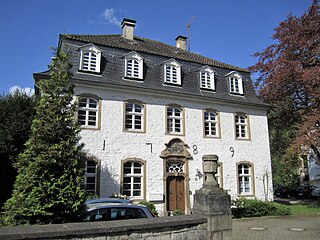
Elsey Abbey, earlier Elsey Priory, is a former women's religious house located near Elsey, now part of Hohenlimburg, Hagen, Germany.
Magdalena of Neuenahr-Alpen was a German noblewoman. She was the heiress of the House of Neuenahr-Alpen; she inherited the County of Limburg. By marriage, she was Countess of Tecklenburg.
Ambrosius Franz Friedrich Christian Adalbert von Virmont was a German nobleman and Imperial Count of Virmont and Bretzenheim.

Cleopatra, Hereditary Princess of Oettingen-Oettingen and Oettingen-Spielberg, known professionally as Cleo von Adelsheim, is a Swiss-born German-Chilean actress, model and socialite. She is known for her title role in the 2015 German television film Prinzessin Maleen. In 2016 she married Franz Albrecht, Hereditary Prince of Oettingen-Oettingen and Oettingen-Spielberg, the heir to the German princely house of Oettingen-Spielberg.

Arnsberg Castle is a former palace in Arnsberg, North Rhine-Westphalia in Germany. It is a located on a 256 m (840 ft) high hill.















